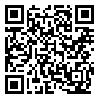Fri, May 23, 2025
[Archive]
Volume 10, Issue 3 (11-1996)
Med J Islam Repub Iran 1996 |
Back to browse issues page
Download citation:
BibTeX | RIS | EndNote | Medlars | ProCite | Reference Manager | RefWorks
Send citation to:



BibTeX | RIS | EndNote | Medlars | ProCite | Reference Manager | RefWorks
Send citation to:
GHARAVI NAEINI L, ELLIS R P. PRODUCTION AND CHARACTERIZATION OF MONOCLONAL ANTIBODIES TO CLOSTRIDIUM PERFRINGENS ENTEROTOXIN DERIVED FROM DIFFERENT ANIMAL SPECIES. Med J Islam Repub Iran 1996; 10 (3) :219-224
URL: http://mjiri.iums.ac.ir/article-1-1186-en.html
URL: http://mjiri.iums.ac.ir/article-1-1186-en.html
From the National Research Center for Genetic Engineering and Biotechnology, Tehran, Islamic Republic of Iran
Abstract: (3982 Views)
The enterotoxins (ETs) of Clostridium perfringens isolated from enterotoxemic
or diarrheic alpacas, pigs, calves, dogs, and horses were obtained from sporulated
cell extracts. The ETs from alpaca, pig, and calf isolates were chromatographed on
Sephadex G-lOO. Monoclonal antibodies (MAbs) against ETs derived from
alpaca, pig, and calf C. perfringens isolates were produced. The MAbs were used
in neutralization of cytotoxicity and immunoblot assays to study cross-reactivity
among all five ETs. Using neutralization of cytotoxicity technique, each MAb
exhibited neutralization against the cytopathic effect of all five ETs on Vero cells.
The neutralization ratio in this study was I ng ET: 50 ng MAb. On immunoblots,
the anti-alpaca ET and anti-pig ET cross-reacted with partially purified ETs from
pig and alpaca respectively. In addition, anti-alpaca ET and anti-pig ET crossreacted
with partially purified ETs from calf and horse, but not ET from dog
isolates. The anti-calf ET cross-reacted with alpaca, calf, dog, and pig but not with
ET from the horse isolate. The immunoblots also indicated that the MAbs
recognized aggregated ET subunits. Our data indicated that C. perfringens ETs
derived from different animal species are very similar.
Type of Study: Original Research: Basic Science in Medicine |
Subject:
Biological Sciences
| Rights and permissions | |
 |
This work is licensed under a Creative Commons Attribution-NonCommercial 4.0 International License. |





